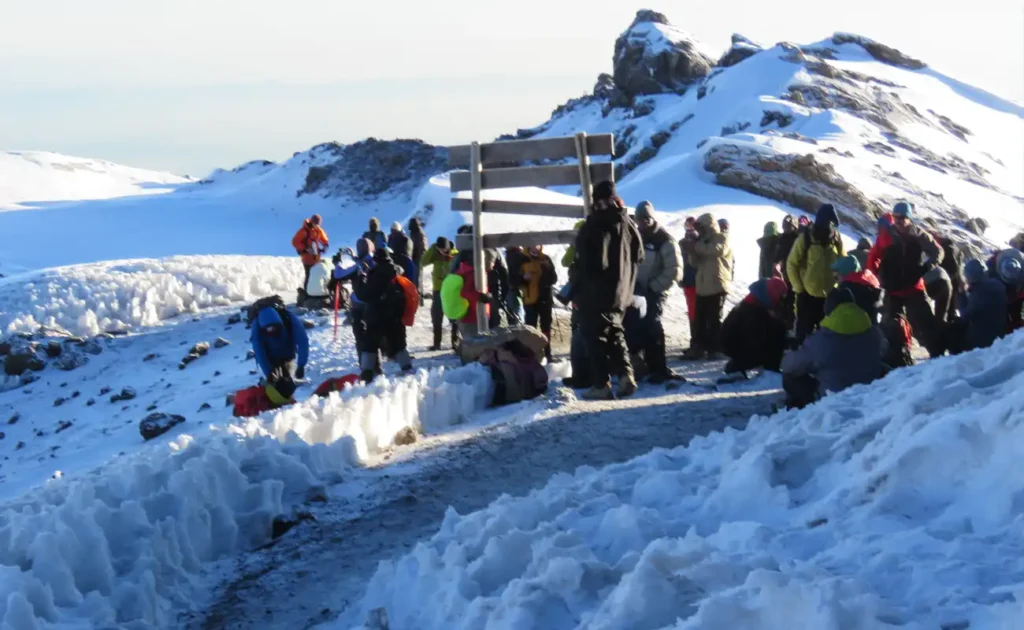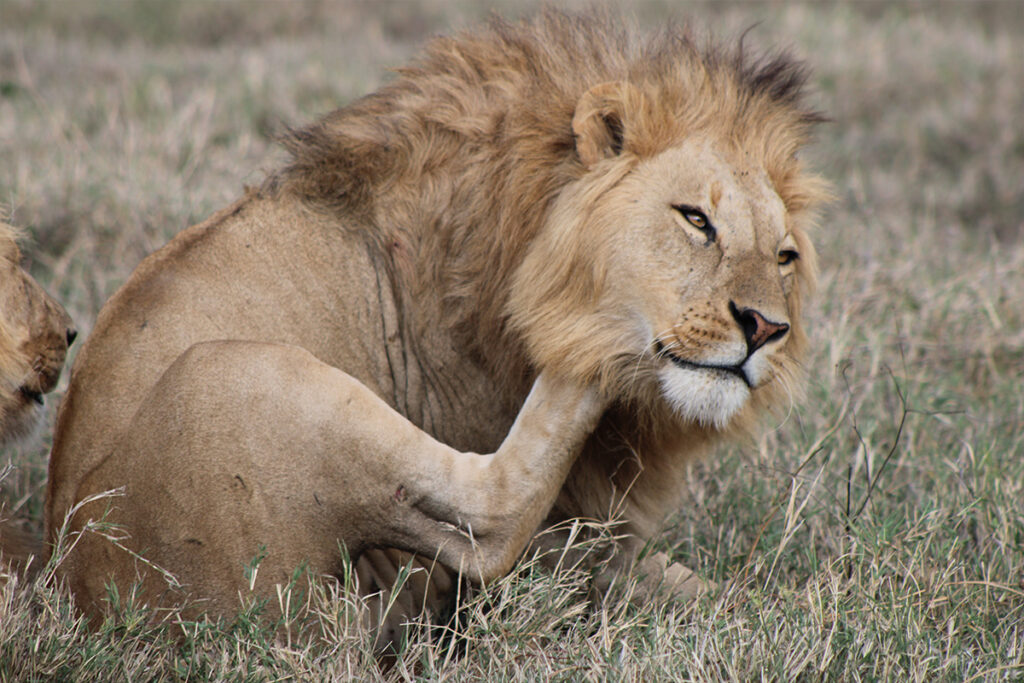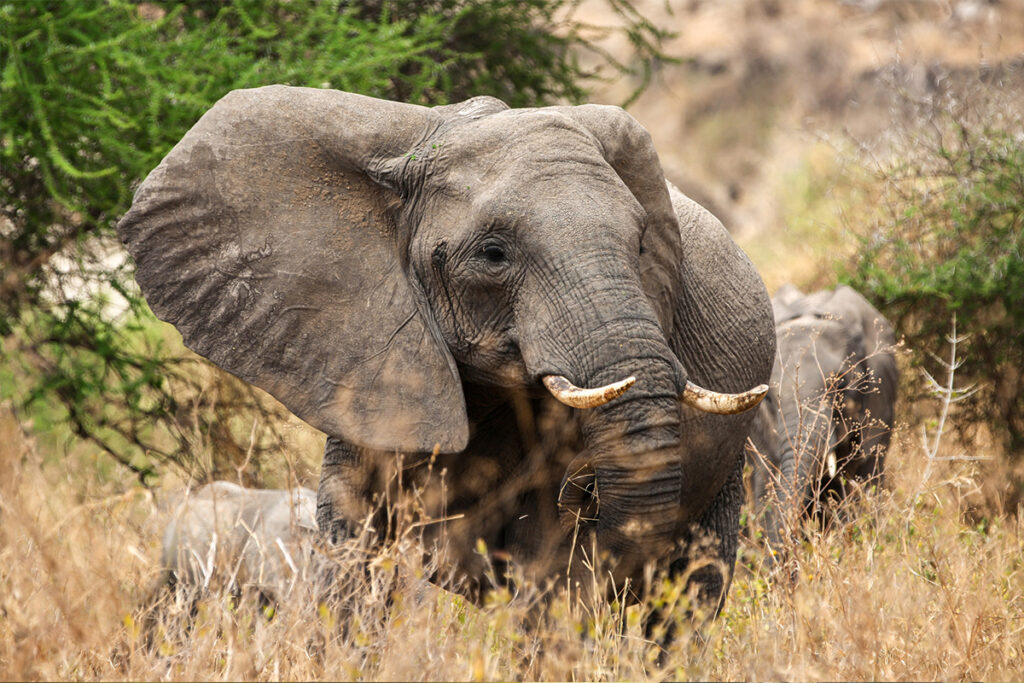Exploring the Serengeti during the Great Migration, where over two million wildebeests traverse its vast plains, is often hailed as a bucket-list experience. Yet, what many don’t realize is the unparalleled intimacy and insight offered by a private Tanzania safari. It transforms the journey into a personal narrative, tailored to every desire and whim.
Private safaris in Tanzania offer more than just solitude; they promise personalized encounters with the wild, steeped in the rich tapestry of local lore. While these bespoke adventures are a modern luxury, their roots are deeply embedded in traditions of exclusive wildlife tourism that began in the early 20th century. In fact, private safaris now contribute significantly to the local economy, ensuring future generations can revel in the same untouched landscapes.
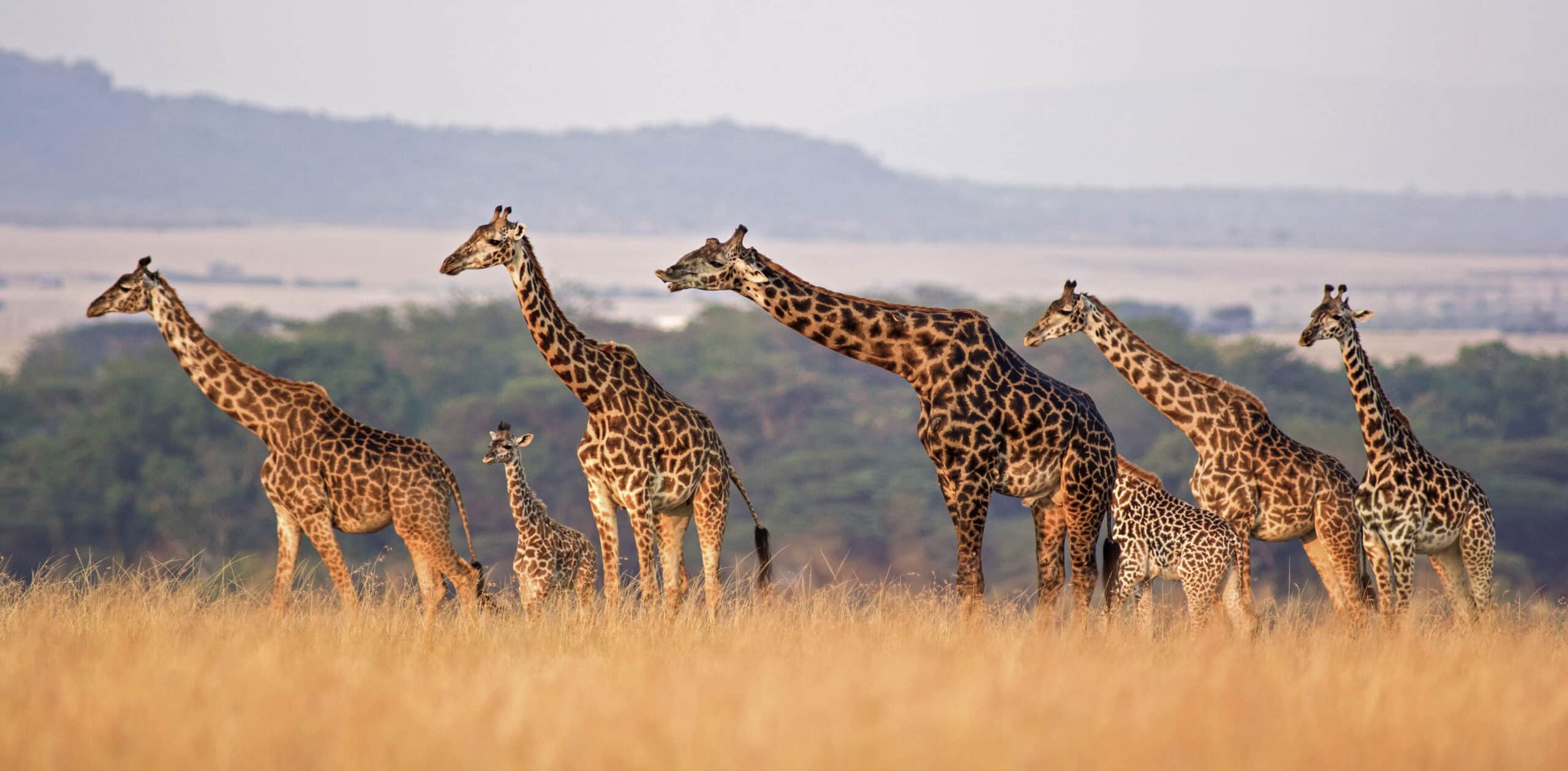
Private Tanzania Safari: A Unique Experience
A private Tanzania safari offers an unmatched adventure tailored to your desires and interests. Imagine witnessing the majestic Great Migration in the Serengeti with personalized guides at your service. This kind of trip redefines luxury, blending it with the raw beauty of nature. Unlike group tours, you have the opportunity to explore at your own pace. According to this post, the trend for bespoke safari experiences is growing, offering even more customization.
The uniqueness of a private safari lies in its flexibility. You can concentrate on specific interests, whether it’s bird-watching or tracking the Big Five. With expert local guides, every detail of the ecosystem comes alive. They can share lesser-known facts and stories about the wildlife and flora. This personalized attention elevates the overall safari experience to new heights.
Additionally, private safaris offer exclusive access to remote and pristine locations. You can visit areas that are rarely seen by the public, making it a truly unique experience. Each trip often includes luxury accommodations designed to blend with the surrounding landscapes. For an idea of what these look like, here is the article about some of the best fancy tents in Tanzania here is the article. This ensures you can sleep in comfort while still immersed in nature.
Such safaris also contribute to wildlife conservation. By opting for private tours, you support local guides and preservation efforts. This sustainable tourism model helps protect habitats and wildlife for future generations. So, while enjoying an exclusive experience, you’re also making a positive impact. It’s a wi
The Allure of Personalized Game Viewing
Personalized game viewing takes your safari adventure to a new level. It allows you to craft a journey focused on your unique interests and passions. Instead of following a set itinerary, you get to decide what animals to track and which landscapes to explore. This type of viewing ensures every moment is both exciting and meaningful. It makes the wilderness feel like your own personal playground.
One of the best parts of personalized game viewing is the opportunity to learn from skilled guides. These experts know the terrain and wildlife like the back of their hands. They share fascinating details and stories you wouldn’t hear elsewhere. It’s not just about spotting animals; it’s about understanding their behaviors and habitat. This knowledge deepens your connection to the incredible world around you.
Imagine watching a lion pride at dusk or spotting rare birds at dawn. Personalized game viewing makes these moments possible. You can decide when and where to go, timing your journeys for the best light and activity. Such flexibility enhances the photography opportunities, making it ideal for shutterbugs. Every picture tells a story that you’ll cherish forever.
In the comfort of your private vehicle, you can explore hidden spots and take breaks whenever needed. Unlike larger group tours, your viewing is uninterrupted and serene. It’s perfect for families, couples, or anyone seeking a quiet escape into nature. This kind of personal attention ensures you have a memorable and intimate experience with the African wild. It’s an adventure you’ll never forget.
Custom Itineraries Tailored to Individual Preferences
Imagine a safari designed just for you, where every detail matches your dreams. Custom itineraries make this possible by offering choices that reflect your interests. Whether you’re interested in photography, hiking, or cultural experiences, there’s something for everyone. For example, a family can focus on giraffe spotting, while bird watchers can track rare species. This flexibility makes every moment on the safari unique and personal.
Creating a custom itinerary starts with understanding what you love the most. Tour operators usually begin by asking questions about your ideal experiences. They consider the best times to visit certain areas for wildlife activity. For those interested, options might include
- night safaris
- walking tours
- cultural village visits
. This approach ensures you don’t miss out on anything important to you.
With a tailored itinerary, privacy and comfort are priorities. You can choose to sleep under the stars in a luxurious tent or stay in a cozy lodge. Transportation is also customizable, from private vehicles to small group watches. This personalized touch makes each journey feel exclusive and special. It’s like having the whole savanna just for you.
Custom itineraries also cater to dietary and mobility needs. Whether you prefer an adventurous trek or a relaxed scenic drive, every detail is planned. This thoughtful consideration enhances the safari, making it accessible and enjoyable for everyone. By focusing on your desires, a custom itinerary turns your safari into a lifetime memory. Such personalization ensures an unforgettable experience in the heart of Africa.
The Benefit of Expert Local Guides
Expert local guides are the heart of any safari adventure, offering insights unavailable in guidebooks. They possess intimate knowledge of the landscape, wildlife behavior, and the best-hidden spots. Their experience allows them to spot animals that others might overlook. With their help, you’ll know where and when to find rare creatures, maximizing your chances of unforgettable sightings. This guidance elevates the entire safari experience.
Local guides also bring the environment to life with stories and cultural context. They explain the significance of local customs and traditions, making each encounter richer. Understanding the human aspect of a region makes the trip more meaningful. Some guides even share personal anecdotes that connect history to the present. It feels like walking through a living museum.
Safety is a crucial aspect where guides make a massive difference. They are trained to handle various wildlife situations, ensuring you stay safe while exploring. Knowing the habits of animals helps prevent dangerous encounters. This expertise allows you to focus on enjoying the experience rather than worrying. Guides are your protective eyes and ears in the wild.
The presence of local guides supports the community by providing jobs and funding conservation efforts. Their income from guiding helps preserve the delicate ecosystems they love. This sustainable tourism supports not only the environment but also local economies. Guides play a pivotal role in maintaining the balance between adventure and conservation. Supporting them means supporting a sustainable future.
Choosing a guide who knows the area well enhances photography opportunities. They can take you to perfect vantage points for stunning shots. A good guide understands lighting and animal behavior, offering tips that improve your photos. This expertise turns a memorable scene into an unforgettable picture. A single great shot can capture the essence of your journey forever.
Exclusive Access to Remote and Pristine Locations
Private safaris provide the unique advantage of accessing remote and pristine locations. These places are often untouched by the masses, preserving their natural beauty and wildlife. You can explore secluded areas that offer a sense of peace and tranquility. It’s as if you have the entire wilderness to yourself. This feeling of exclusivity enhances the safari experience, making it truly special.
In these hidden gems, you’ll encounter a diverse range of wildlife and breathtaking landscapes. From secluded rivers to hidden valleys, every spot is a new world waiting to be discovered. Such places host rare species that few visitors ever see. Some areas are perfect for spotting nocturnal animals during night safaris. It’s a rare opportunity to witness nature in its purest form.
Accessing these remote locations is made possible through special permits and seasoned guides. They have the know-how and connections to take you off the beaten path. This ensures that you not only see popular attractions but also the less-explored wonders. By venturing into these areas, you’ll gain a deeper understanding of the ecosystem. Guides ensure sustainable practices to protect these precious sites.
Privacy is a big perk when visiting these secluded spots. Smaller groups mean more intimate experiences without the distractions of large crowds. You can set your own pace and truly immerse yourself in nature. This personal touch makes each trip memorable and unique. It’s an adventure that feels catered just for you.
Sustainable tourism principles are often emphasized in these areas. The goal is to maintain the natural integrity of the environment. Responsible travel ensures these special locations remain pristine for future generations. By supporting conservation-minded tours, visitors can contribute to the protection of local habitats. It’s a way to enjoy the present while investing in the future.
The Best Times to Book a Private Safari in Tanzania
The timing of your private safari in Tanzania can greatly affect your overall experience. Generally, the best time to visit is during the dry season, which spans from late June to October. This period offers excellent wildlife viewing as animals gather around water sources. The weather is also more predictable, making travel easier and more comfortable. Clear skies and sunny days enhance your adventure even more.
If you’re keen on witnessing the Great Migration, plan your trip between July and September. During these months, vast herds of wildebeests and zebras move through the Serengeti. This spectacle is a highlight for many travelers. It’s a dramatic display of nature, where predator and prey meet in a life-and-death struggle. Timing your visit during this event guarantees unforgettable memories.
The shoulder seasons, from January to March and November to mid-December, can also be ideal for a safari. These periods are less crowded, offering a more intimate experience with nature. Rainfall is minimal, and the scenery is lush and green. Birdwatchers will find these months particularly rewarding as migrant birds arrive. Plus, you may benefit from lower prices and more availability in accommodations.
April and May are considered the rainy season and are often less popular for safaris. However, those who don’t mind the rain can enjoy the lush landscape and fewer tourists. The rains bring a different kind of beauty and vitality to the region. Wildlife is still plentiful, and the dramatic skies make for stunning photographs. A safari during the rainy season can offer a unique and serene experience.
Consider your interests and preferences when deciding the best time for your safari. Weather, wildlife behavior, and personal preferences all play a role. Whether you’re looking for vibrant landscapes, unique animal encounters, or fewer crowds, there’s a perfect time for everyone. Researching and planning ahead ensures you get the most out of your Tanzanian adventure.
Key Locations for a Memorable Safari Experience
Tanzania boasts some of the most iconic safari destinations in Africa. One must-visit location is the Serengeti National Park, renowned for its stunning wildlife and the Great Migration. Here, you can witness millions of wildebeests and zebras traversing the plains. This area offers prime game viewing throughout the year, ensuring an unforgettable adventure. The vast landscapes are perfect for capturing breathtaking photos.
The Ngorongoro Crater is another highlight that shouldn’t be missed. This ancient volcanic caldera is home to diverse ecosystems and abundant wildlife. From lions to flamingos, it’s a one-stop destination to see a variety of animals up close. The crater’s lush environment makes it an ideal spot for both game drives and walking safaris. Exploring this area gives you a sense of walking within nature’s amphitheater.
For those interested in less crowded spots, Tarangire National Park offers unique scenery and experiences. Known for its large herds of elephants and iconic baobab trees, this park provides a quieter ambiance compared to other parks. The Tarangire River attracts numerous animals especially during the dry season, making it an excellent place for game viewing. Bird enthusiasts will also find over 500 species thriving here.
The Selous Game Reserve presents an off-the-beaten-path option with fewer visitors and more exclusivity. It’s one of Africa’s largest reserves and hosts a diverse range of habitats including savannas, wetlands, and forests. Boat safaris on the Rufiji River offer unique perspectives on wildlife like crocodiles and hippos. This reserve allows you to experience deeper immersion into Tanzania’s wilderness.
Finally, consider visiting Ruaha National Park for its dramatic landscapes and exceptional biodiversity. As Tanzania’s largest national park, Ruaha draws fewer tourists yet promises rich wildlife encounters with buffaloes, lions trickling through the rugged terrain alongside picturesque riverbanks lined with fig trees offer photographers dreamlike scenarios rivaling any travel diary entry worldwide graciously underachieving others’ expectations ultimately procreative everlasting memories filling hearts forever lasting significance moments everyone tries hard captures
Understanding the Impact of Private Safaris on Wildlife Conservation
Private safaris play a crucial role in wildlife conservation. By providing exclusive experiences, they ensure that the number of tourists remains low, reducing the strain on natural habitats. Limited visitor numbers mean less disruption to the wildlife’s natural behaviors. This responsible tourism approach helps to preserve ecosystems while allowing people to enjoy incredible wildlife encounters. It’s a win-win situation for nature and adventurers alike.
The financial support generated by private safaris directly contributes to conservation efforts. Many private safari operators donate a portion of their profits to local conservation initiatives. These funds are used for anti-poaching measures, habitat restoration, and wildlife monitoring. In this way, private tours not only offer exciting adventures but also create positive change. They become a driving force for protecting endangered species and their environments.
Hiring local guides during these safaris is another impactful aspect. These guides bring essential knowledge and experience to each journey, ensuring visitors gain a deeper understanding of the ecosystem. Their involvement also provides employment opportunities, supporting the local economy. This collaboration fosters a sense of pride and responsibility among community members to protect their wildlife. It strengthens the connection between tourism and conservation.
Private safaris encourage sustainable practices that limit environmental damage. This can involve using eco-friendly vehicles, staying in lodges that prioritize sustainability, and minimizing waste. By raising awareness about ecological footprints, they inspire tourists to adopt more eco-conscious behaviors. These practices ensure that the beauty and diversity of Tanzania’s landscapes are preserved for future generations. Every small action helps create a lasting impact.
However, private safaris also need careful regulation to prevent potential negative effects. Overly exclusive areas might inadvertently create barriers for certain wildlife or disrupt existing wildlife corridors. Ongoing collaboration between safari operators, governments, and conservationists ensures balance is maintained. By working together, they can maximize the positive effects of these adventures on both wildlife protection and cultural preservation.
Planning Your Trip: What to Know Before You Go
When planning a safari in Tanzania, it’s important to know the best time to visit. The dry season, from June to October, offers the best wildlife viewing opportunities. Depending on your interests, such as seeing the Great Migration or bird watching, timing your trip accordingly makes all the difference. During these months, the weather is great and animals are easier to find. This makes for a rewarding and exciting adventure.
Packing for a safari requires some thought. Lightweight and neutral-colored clothing is ideal to blend into the natural environment. Don’t forget essentials like a wide-brimmed hat, sunscreen, and insect repellent. Binoculars and a good camera are a must for capturing unforgettable moments. Packing a travel guide can also help you learn more about what you’re seeing on your journey.
Understanding the type of accommodations available is crucial. Options range from luxurious lodges to cozy tented camps that place you right in the heart of nature. Researching in advance allows you to choose based on comfort, location, and budget. Many camps offer all-inclusive deals, which can be convenient. The choice depends on the depth of experience you’re seeking.
Health and safety must be a part of your travel checklist. Consult with a healthcare provider to know if you need vaccines or malaria tablets before your trip. Having travel insurance is also wise for any unexpected issues. Always keep a small first-aid kit handy for minor ailments. Staying safe and healthy ensures you enjoy every moment of your adventure.
Understanding local customs and etiquette enhances your travel experience. Learning a few Swahili phrases can be helpful and appreciated by locals. Respect for cultural and environmental practices goes a long way in ensuring a positive interaction with the communities. It’s important to be mindful of personal conduct, especially when visiting villages or cultural sites. Every interaction enriches the overall experience, leaving lasting memories.
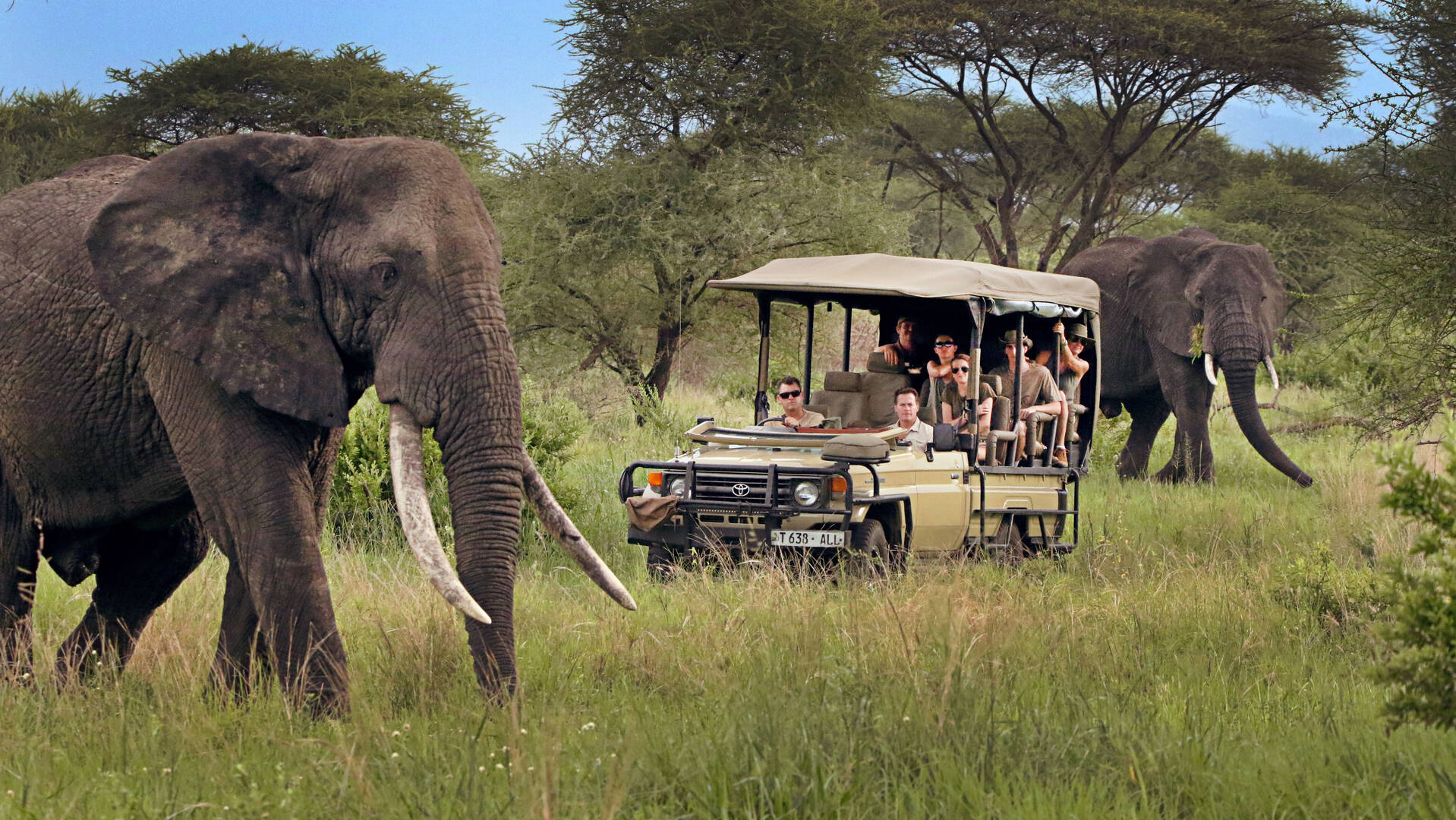
Frequently Asked Questions
Planning a private Tanzania safari brings many exciting questions. Here, we address some common ones to help you prepare for your adventure.
1. What is the best time of year for a Tanzania safari?
The best time for a Tanzania safari is during the dry season, from late June to October. This period offers excellent wildlife viewing as animals congregate around water sources. The weather is also more predictable. It’s also easier for vehicles to traverse the parks during this time.
Additionally, if you want to witness the Great Migration, the months of July to September are ideal. During this time, vast herds of wildebeests and zebras move through the Serengeti. This provides a spectacular and unforgettable wildlife experience.
2. What wildlife can I expect to see in Tanzania?
Tanzania is home to a vast array of wildlife, including the celebrated Big Five: lions, elephants, rhinos, buffaloes, and leopards. Additionally, you can spot cheetahs, giraffes, and a wide variety of bird species. The diversity of animals makes each day in the wild unique.
The Great Migration is another highlight, where millions of wildebeests and zebras migrate across the Serengeti. You may also see hippos and crocodiles in the rivers. Each park has its own unique set of animals and experiences to offer.
3. Are private safaris suitable for families?
Yes, private safaris can be an excellent choice for families. They offer tailor-made itineraries that cater to the interests and needs of all family members. You’ll have the flexibility to adjust activities and excursions to suit your pace and preferences.
Many safaris provide educational experiences tailored for children. This helps them learn about wildlife and conservation in an engaging way. Accommodations can also be family-friendly, often including safe and comfortable lodging options.
4. How do private safaris contribute to wildlife conservation?
Private safaris contribute significantly to wildlife conservation efforts. By limiting the number of visitors, they reduce the environmental impact on delicate ecosystems. Funds from private tours often support local conservation projects and communities.
This financial support helps fund anti-poaching initiatives, wildlife monitoring, and habitat restoration. Hiring local guides and staff also strengthens community ties to conservation. Sustainable tourism plays an essential role in protecting Tanzania’s natural heritage.
5. What should I pack for a Tanzania safari?
When packing for a Tanzania safari, consider bringing lightweight, neutral-colored clothing to blend into the environment. Essential items include a wide-brimmed hat, sunscreen, insect repellent, and comfortable walking shoes. These will keep you comfortable and protected throughout your trip.
Don’t forget binoculars and a good camera to capture stunning wildlife moments. It’s also smart to pack a basic first-aid kit and any personal medications. Traveling light but smartly ensures you have everything you need without being weighed down.

